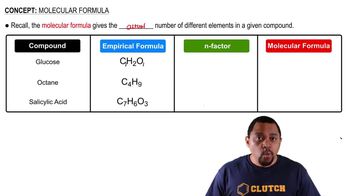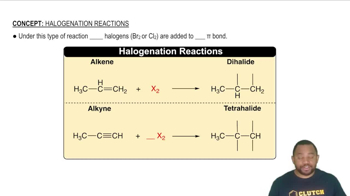Here are the essential concepts you must grasp in order to answer the question correctly.
Oxidation States
Oxidation states indicate the degree of oxidation of an atom in a compound, reflecting the number of electrons lost or gained. For halogens, common oxidation states include -1, +1, +3, +5, and +7, depending on the compound. Understanding oxidation states is crucial for determining the reactivity and properties of compounds, especially in acids and their derivatives.
Recommended video:
Acid Formulas
The formula of an acid typically consists of hydrogen ions (H+) combined with an anion. In the case of bromic acid (HBrO3) and hypoiodous acid (HIO), the anions are derived from bromine and iodine, respectively. Recognizing the structure of these acids helps in writing their correct chemical formulas and understanding their behavior in reactions.
Recommended video:
Determining Molecular Formulas
Halogen Chemistry
Halogens are a group of elements in Group 17 of the periodic table, known for their high reactivity and tendency to form acids with hydrogen. The chemistry of halogens involves various oxidation states and the formation of different types of acids, such as oxoacids. Familiarity with halogen behavior is essential for predicting the properties and reactions of compounds like bromic and hypoiodous acids.
Recommended video:
 Verified step by step guidance
Verified step by step guidance

